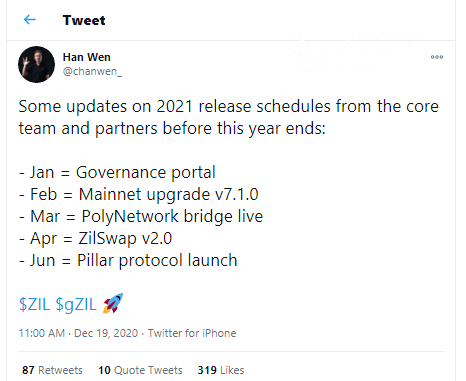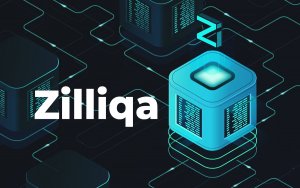Han Wen, the head of ZILHive educational platform by Zilliqa (ZIL) blockchain firm, unveils Zilliqa's plans for Q1-Q2, 2020. Both governance mechanisms and exchange instruments will be reconsidered.
Poly Network, governance, mainnet: Zilliqa's nearest plans
Mr. Wen announced that Zilliqa's (ZIL) core team and partners updated the project roadmap for the first months of 2021. The new plan is created with the focus of accelerating exposure of Zilliqa (ZIL) to the segment of decentralized financial applications.

In January 2021, Zilliqa (ZIL) plans to rollout its governance portal. The year 2020 proved this form of protocol organization as a viable one for decentralized finances segment. Top DeFis Aave Protocol (AAVE) and Compound (COMP) switched to this model based on governance portals.
One month later, Zilliqa (ZIL) will likely perform a mainnet upgrade. The core software build will be updated to v7.1.0. PolyNetwork bridge, the construction that connects Zilliqa (ZIL) to Ontology (ONT), Neo (NEO) and other blockchains, and will go live in March.
Q2, 2021, will start for Zilliqa (ZIL) with a major upgrade of its decentralized exchange, ZilSwap. ZIL enthusiasts will be able to exchange their assets on ZilSwap 2.0.
Stablecoins on Zilliqa (ZIL): Introducing Pillar
Pillar Protocol (GZIL), a decentralized community-driven protocol for stablecoins issuance on Zilliqa (ZIL), will go live in June. This decentralized application will be governed by gZIL tokens locked in voting contracts by holders.
For the first time, the DeFi ambitions of Zilliqa (ZIL) were disclosed in September 2020 by its president, Dr. Amrit Kumar. As covered by CryptoComes, the Zilliqa-based DeFi ecosystem will include staking options, decentralized exchange and stablecoins.
Smart contracts for these DeFis will be written in the Zilliqa-specific Scilla programming language with a TLA+ verification framework.





